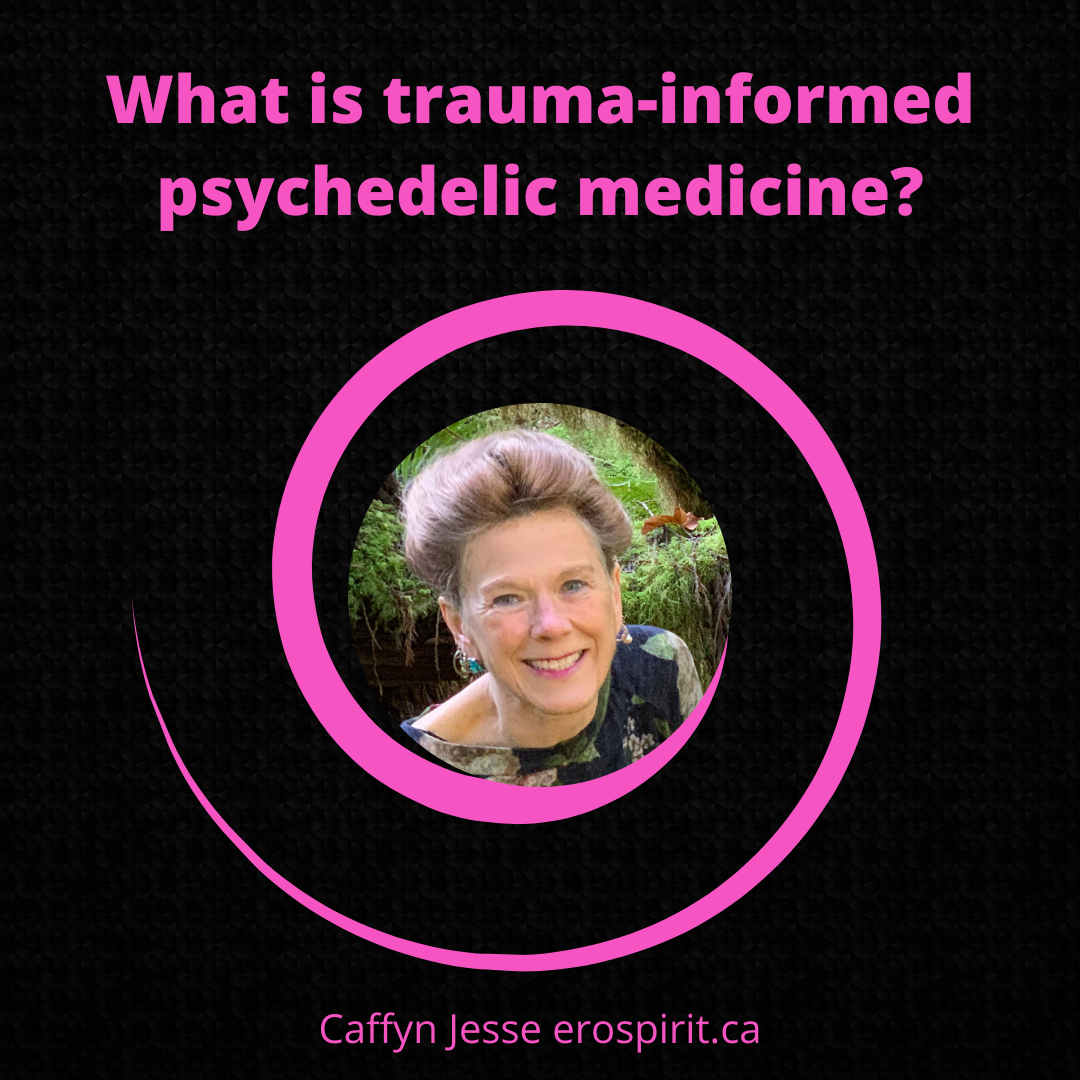What would a trauma-informed practice of psychedelic medicine look like?
Though my years working as a sacred intimate and teacher of somatic sexual wellness, I walked with many people who had experienced profound trauma. I had my own personal journey through the traumas of sexual violence to a life that is rich with love and ecstasy. And so I understand something of the science, and the magic, of how neuroendocrine systems get recalibrated by rapture.
In an experience of profound trauma, people experience dissociative self-abandonment. We stop receiving messages from the vagus nerve that monitors our inner state. Our souls leave our bodies; we die before we die. Consciously or unconsciously, people healing from trauma often want to experience dissociative self-abandonment again – but differently – while experiencing pleasure, choice and agency. It makes so much sense, that traumatized people come looking for healing through ecstatic experiences of psychedelics, or sexual healing. Ecstasy is a form of self-abandonment (the etymology of ecstasy = ex-stasis, “standing outside the self”). Through erotic experiences of orgasm, or through the ecstasy of profound psychedelic experiences, we can feel self-abandonment while we feel efficacy, and relational support, instead of in the agonies of our lonely traumas.
Yes it makes sense, BUT the essence of trauma-informed practice is titration. We carefully introduce experiences, in tiny amounts, while growing capacity. Having a trauma-informed approach means moving at the pace of embodied trust. A too-fast approach can trigger increased dysregulation, flashbacks, mental splitting and emotional precarity. Titration works WITH the body’s defense systems, honouring them, and listening. We wait, until the body – not just the mind – wants more.
Yes, we can collapse the body’s autonomic defense systems with huge experiences of ecstasy, just as we can with awful agonies. Most offerings of psychedelic medicine seem to embrace this path, promising to address PTSD and unprocessed trauma with large-dose experiences of psychedelics. I hear nothing about building somatic capacity, with titration and integration.
Premature ecstatic experiences will feel profound, but they are unlikely to be integrated into long-term change. At worst, they can actively retraumatize. When I first entered the world of sexual healing two decades ago, it was full of similar promises and practices. But we learned – and we integrated new understandings about the neurobiology of trauma, as they emerged. We need to be trauma-informed, if we are to avoid doing harm. Whenever there is unprocessed or ongoing trauma, people need practice listening to the body’s truths. We need titrated experiences of just-enough ecstasy, to align our lives with ecstatic rhythms. We need embodied practice choosing too much or too little, and then feeling empowered and supported to try again, and find what feels just right.
Whether I’m working with the erotic, or with psychedelics, I want to support people in feeling empowered choice and voice. I want them growing their embodied self-trust, and capacity for discerning trust-worthiness in others. This takes actual, embodied practice.

